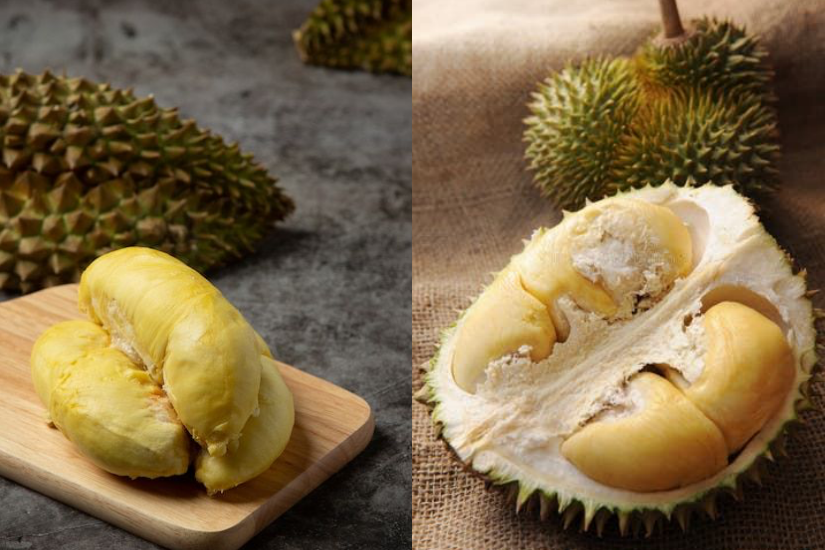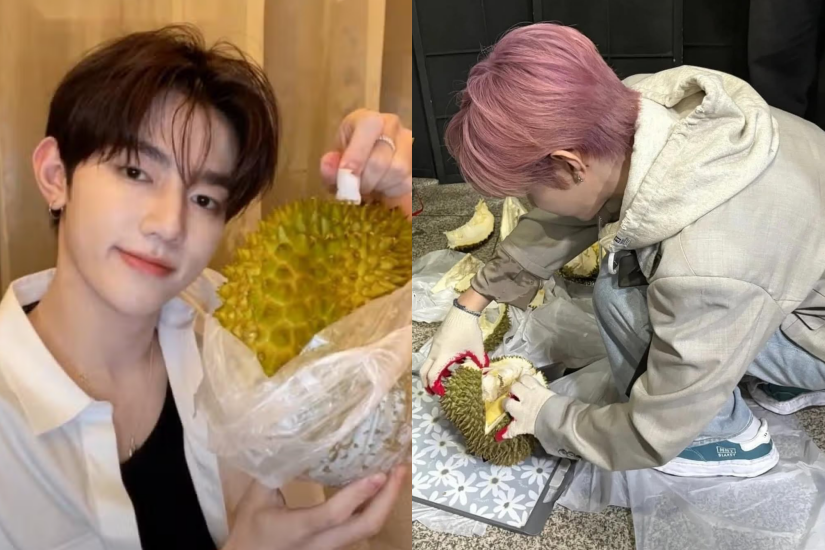Every summer, a durian craze sweeps through, with the durian known as The King of Fruits boasting a unique aroma and rich nutrients that inspire both love and disdain! What exactly causes the distinctive A pungent aroma with a hint of fragrance smell of this fruit? This time, we’ve enlisted the expertise of certified nutritionist Wu Yao-fan to break down the nutritional value of durian and some important things to keep in mind. Plus, she’ll share two delicious durian dessert recipes, so you can enjoy the flavor without worrying about Feeling hot and flushed!
The source of the durian’s unique aroma: sulfur compounds.
The unforgettable aroma of durian primarily comes from the various sulfur compounds found in its flesh. Scientific research indicates that durian contains over 50 different volatile sulfur compounds, which easily evaporate at room temperature, releasing a powerful scent. The distinctive odor of durian may also serve to attract pollinating animals or help disperse its seeds.
Additionally, everyone’s sensitivity to these compounds varies, which is why when these volatile sulfur compounds enter the nasal cavity and stimulate the olfactory nerves, we perceive the unique aroma of durian. This also explains why some people find the scent of durian to be rich and fragrant, while others consider it unbearable.

The 3 Common Durian Varieties
Musang King Durian (D197)
The Musang King is hailed as The King of Durian, the most popular premium durian variety. Its flesh ranges from golden yellow to deep yellow, with a creamy texture and rich flavor. It strikes the perfect balance of sweetness without being cloying, leaving a unique bitter-sweet aftertaste. The Musang King features small seeds and plump, juicy flesh. Despite its higher price point, its exceptional taste and aroma have made it a top choice among durian enthusiasts.
Golden Pillow Durian (Golden Pillow / D159)
The Golden Pillow, or “Jin Zhentou,” is Thailand’s most famous durian variety, named for its pillow-like shape and golden hue. Its flesh is soft, delicate, and rich in aroma without being overpowering. The sweetness is just right, accompanied by a subtle hint of creaminess, and it has almost no bitterness, making it perfect for first-time durian tasters. Compared to other durian varieties, the Golden Pillow is of moderate size with smaller, more uniform spikes, making it the largest durian export from Thailand.
Red Prawn / D24
The Hong Shrimp Durian is a more traditional variety, but many people are familiar with the D24 durian. Its flesh ranges from pale yellow to light orange and has a sticky texture that resembles glutinous rice. What sets it apart is its distinct layers of sweetness intertwined with bitterness, creating a rich taste experience. With a more accessible price point and consistent flavor, it’s a great choice for durian newcomers, widely available in the market.
Nutritional Value of Durian
| Durian (Musang King) | per 100 grams |
| Calories (kcal) | 163 |
| Carbohydrates (grams) | 30.1 |
| Protein (grams) | 2.2 |
| Fat (grams) | 3.7 |
| Dietary Fiber (grams) | 3.1 |
| sugar (grams) | Please provide the text you would like me to translate. |
| Calcium (mg) | 29 |
| Potassium (mg) | 436 |
| Sodium (milligrams) | 6 |
Reference: https://www.cfs.gov.hk/english/nutrient/fc-myreport.php
Durian’s calories mainly come from carbohydrates and healthy fats, while being rich in fiber, which helps maintain gut health. Every 100 grams of durian flesh contains about 163 calories, significantly higher than most fruits, leading to its common nickname as High-calorie fruits. Durian is particularly high in potassium, with around 436 milligrams per 100 grams, which is even more than bananas. Potassium is an essential mineral for maintaining heart health and stable blood pressure. Additionally, durian is packed with vitamin C, B vitamins (especially B6), folate, and minerals like magnesium, all of which are beneficial for the immune and nervous systems.
Durian Consumption Guidelines: Portion Control is Key
While durian is packed with nutrients, its high-calorie and high-fat nature means that it’s best to limit your intake to no more than 2 segments at a time (around 100 grams). Each 100 grams is roughly equivalent to more than half a bowl of rice and about a teaspoon of oil. Excessive consumption not only risks weight gain but can also lead to digestive discomforts such as bloating and heatiness.
Durian is primarily composed of monosaccharides, which means it has a higher glycemic index after consumption. Therefore, individuals with high blood sugar levels, as well as those with diabetes, should be especially mindful of their portion sizes. Additionally, durian is rich in potassium, so people with weakened kidney function also need to keep an eye on how much they eat to avoid aggravating their condition.
Durian Dessert Recipes
| Material | Method | |
| Durian Pudding | Durian flesh 100g (about 2 pieces of pulp) Skim milk 1 cup (250ml) Gelatin powder 30g Sweetener 2 tablespoons Low-fat cream 200ml | 1. Gather all the ingredients and remove the seeds from the durian. 2. Dissolve the gelatin powder in 100ml of water and set aside. 3. Pour the skimmed milk and sugar into a pan and simmer over low heat until it just begins to boil. 4. Add the dissolved gelatin and stir until fully melted. 5. Incorporate the cream and the durian flesh, mixing thoroughly. 6. Use a food processor to blend the cooked durian milk until smooth and creamy. 7. Finally, pour the durian milk into a container and refrigerate until it sets. |
| Durian Milk Sago | Durian flesh 100g Sago 20g | 1. Boil water and add the sago, cooking until it’s translucent around the edges (about 10-15 minutes). Make sure to stir occasionally to prevent sticking, then turn off the heat and let it steam for 5 minutes. 2. Rinse the cooked sago with cold water and set aside. 3. Mash the durian flesh into a puree. 4. Blend half of the durian with skim milk until smooth. 5. Combine the sago with the durian puree and you’re good to go! |
Learn more: Kathy Wu Yao-fen – Accredited Nutritionist (Hong Kong Nutritionists Association)
Founder of Home Nutrition Center, frequently appears in television and newspaper nutrition interviews, and writes column articles. Kathy holds a Bachelor’s degree in Food and Nutritional Sciences from Chinese University of Hong Kong, a Master’s degree in Counseling Psychology from the University of Hong Kong, and is a certified Neuro-Linguistic Programming (NLP) practitioner and hypnotherapist. She is committed to the belief of Mindful engagement, energetic devotion., helping urban dwellers achieve happiness and wellness.


